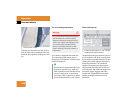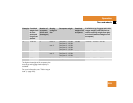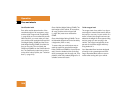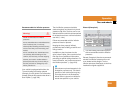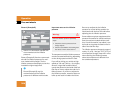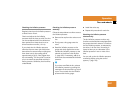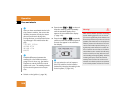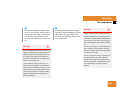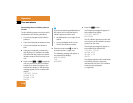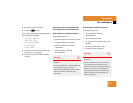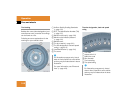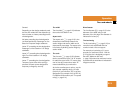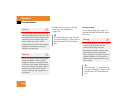
307
Operation
Tires and wheels
Checking tire inflation pressure
Regularly check your tire inflation pressure
at least once a month.
Check and adjust the tire inflation
pressure when the tires are cold. The tires
can be considered cold if the vehicle has
been parked for at least three hours or
driven less than one mile (1.6 km).
If you check the tire inflation pressure
when the tires are warm (the vehicle has
been driven for several miles or sitting less
than three hours), the reading will be
approximately 4 psi (0.3 bar) higher than
the cold reading. This is normal. Do not let
air out to match the specified cold tire in-
flation pressure. Otherwise, the tire will be
underinflated.
Checking tire inflation pressure
manually
Follow the steps below to achieve correct
tire inflation pressure:
̈ Remove the cap from the valve on one
tire.
̈ Firmly press a tire gauge onto the
valve.
̈ Read tire inflation pressure on tire
gauge and check against the recom-
mended tire inflation pressure on the
placard on the driver’s door B-pillar
(
୴ page 305). If necessary, add air to
achieve the recommended tire inflation
pressure.
̈ Install the valve cap.
̈ Repeat this procedure for each tire.
Checking tire inflation pressure
electronically*
The tire inflation pressure monitor only
functions on wheels that are equipped with
the proper electronic sensors. It monitors
the tire inflation pressure, as selected by
the driver, in all four tires. A warning is
issued to alert you to a decrease in tire
inflation pressure in one or more of the
tires.
You can call up the tire inflation pressure
monitoring display using the control
system (
୴ page 143).
i
If you have overfilled the tire, release
tire inflation pressure by pushing the
metal stem of the valve with e.g. a tip of
a pen. Then recheck the tire inflation
pressure with the tire gauge.




